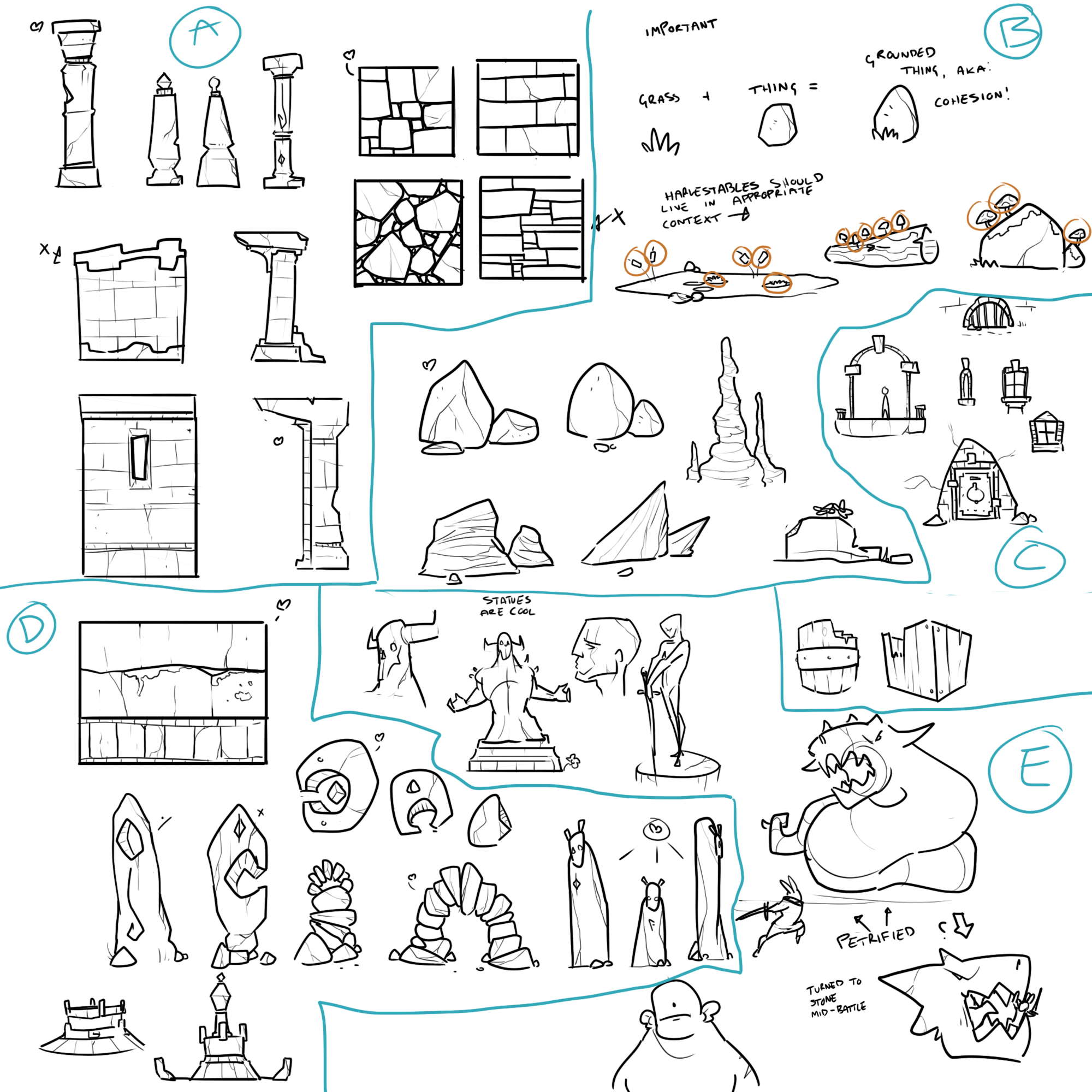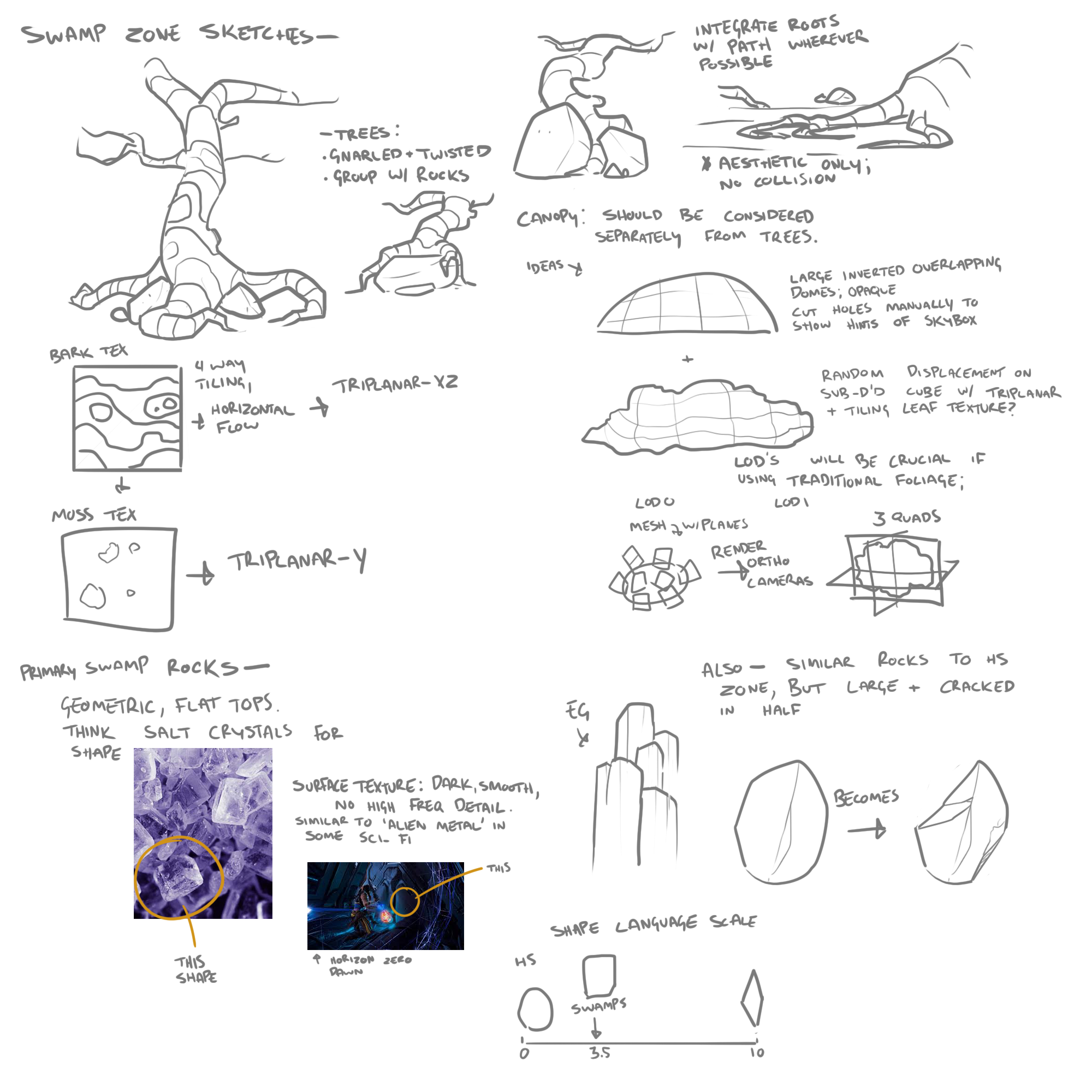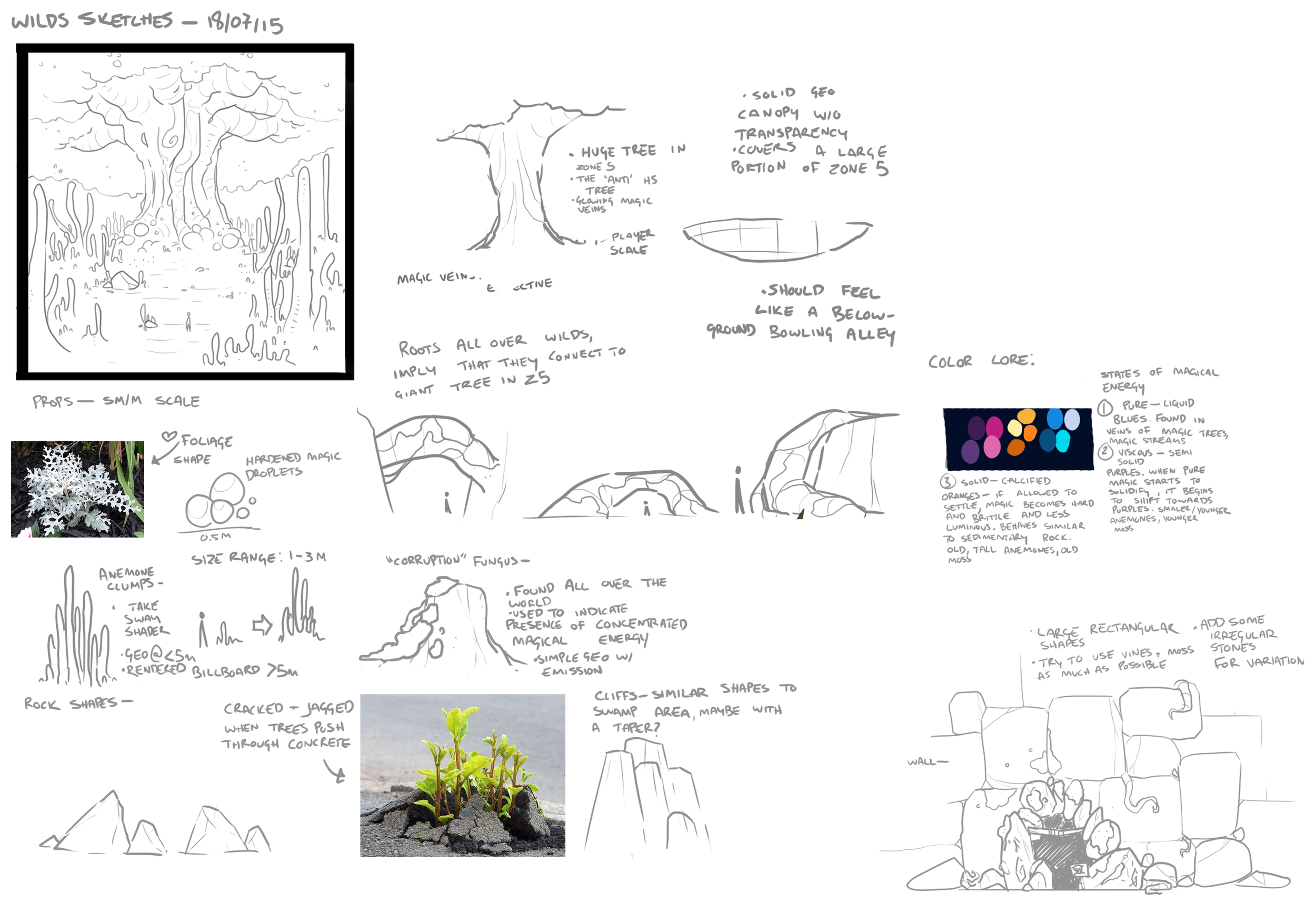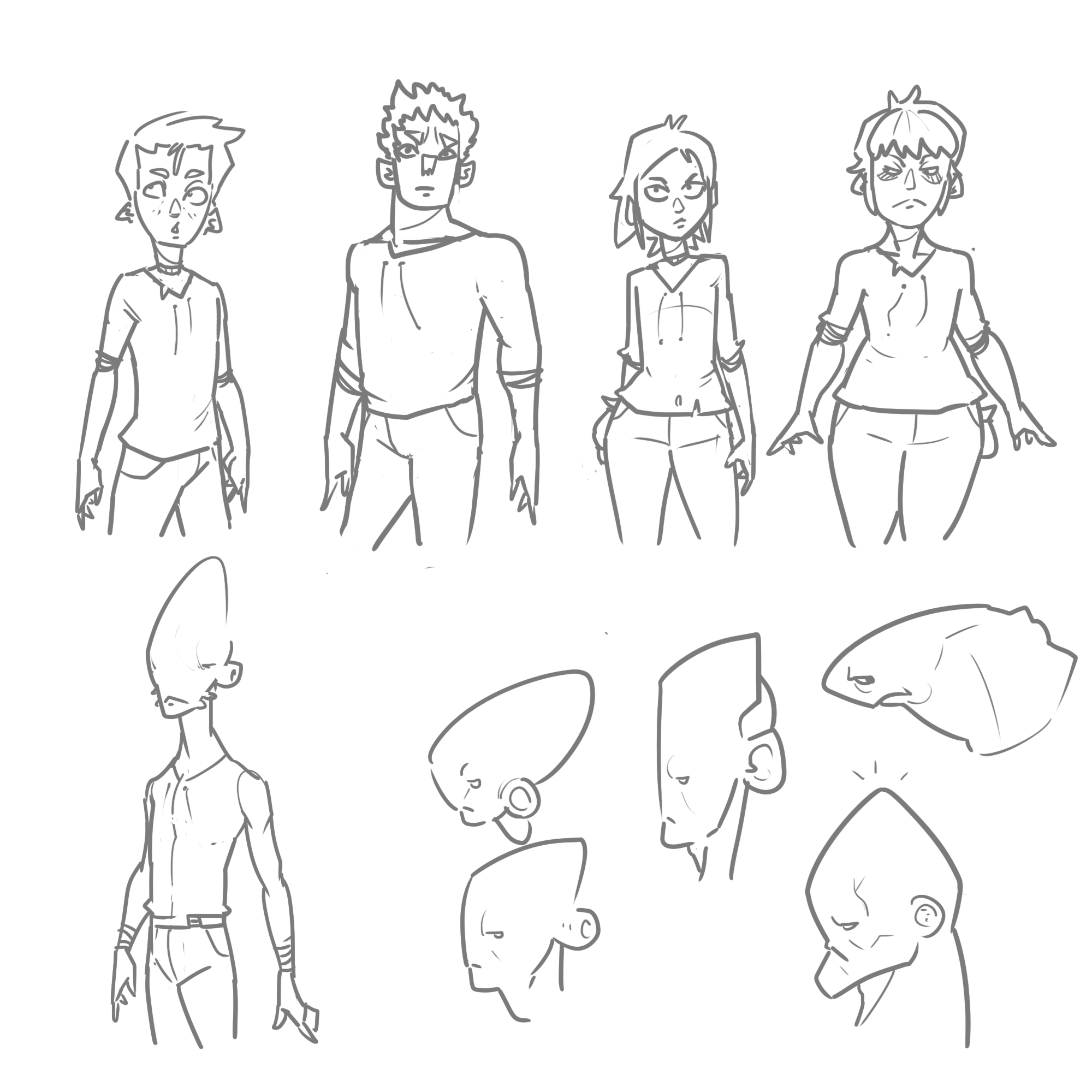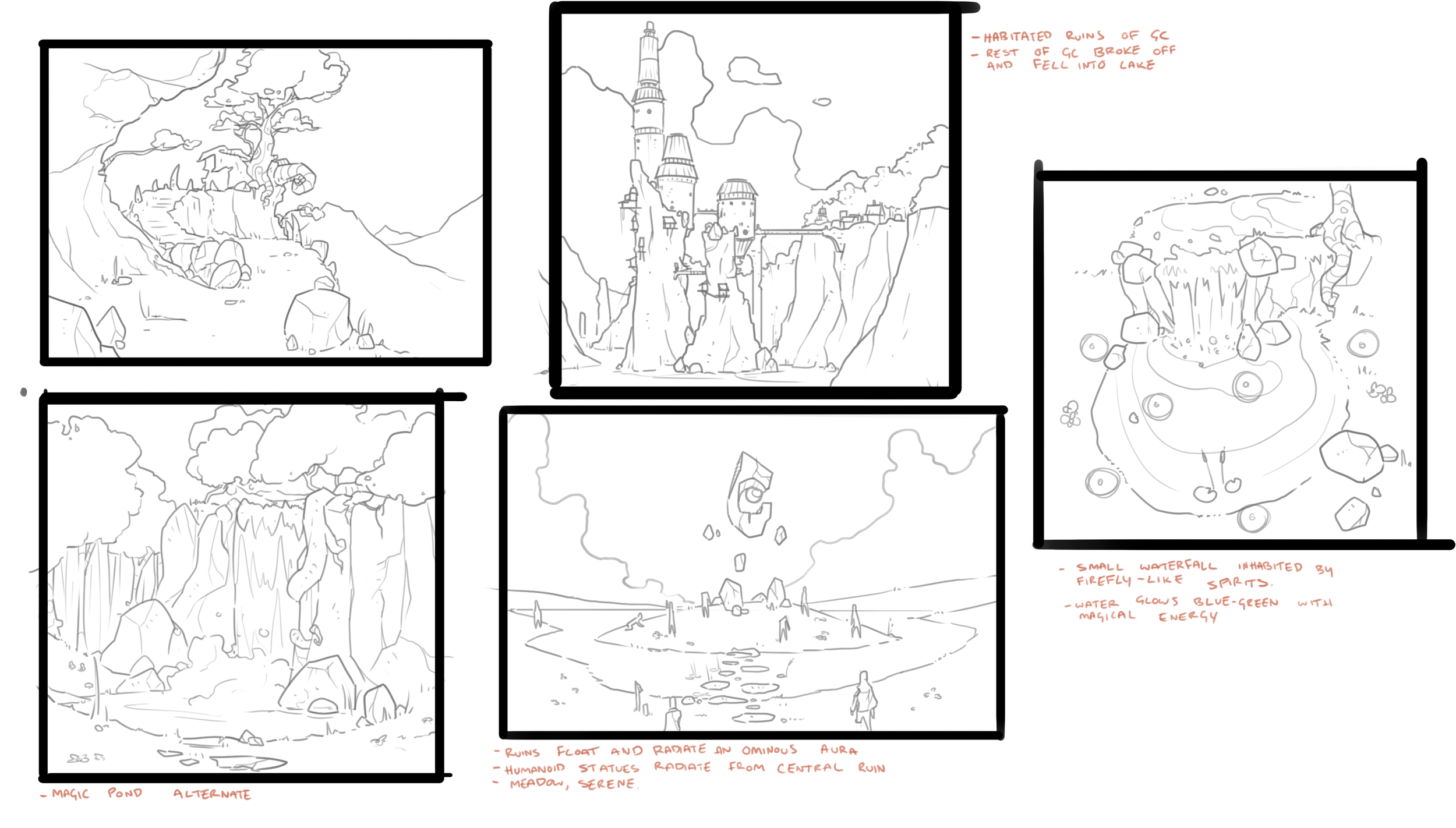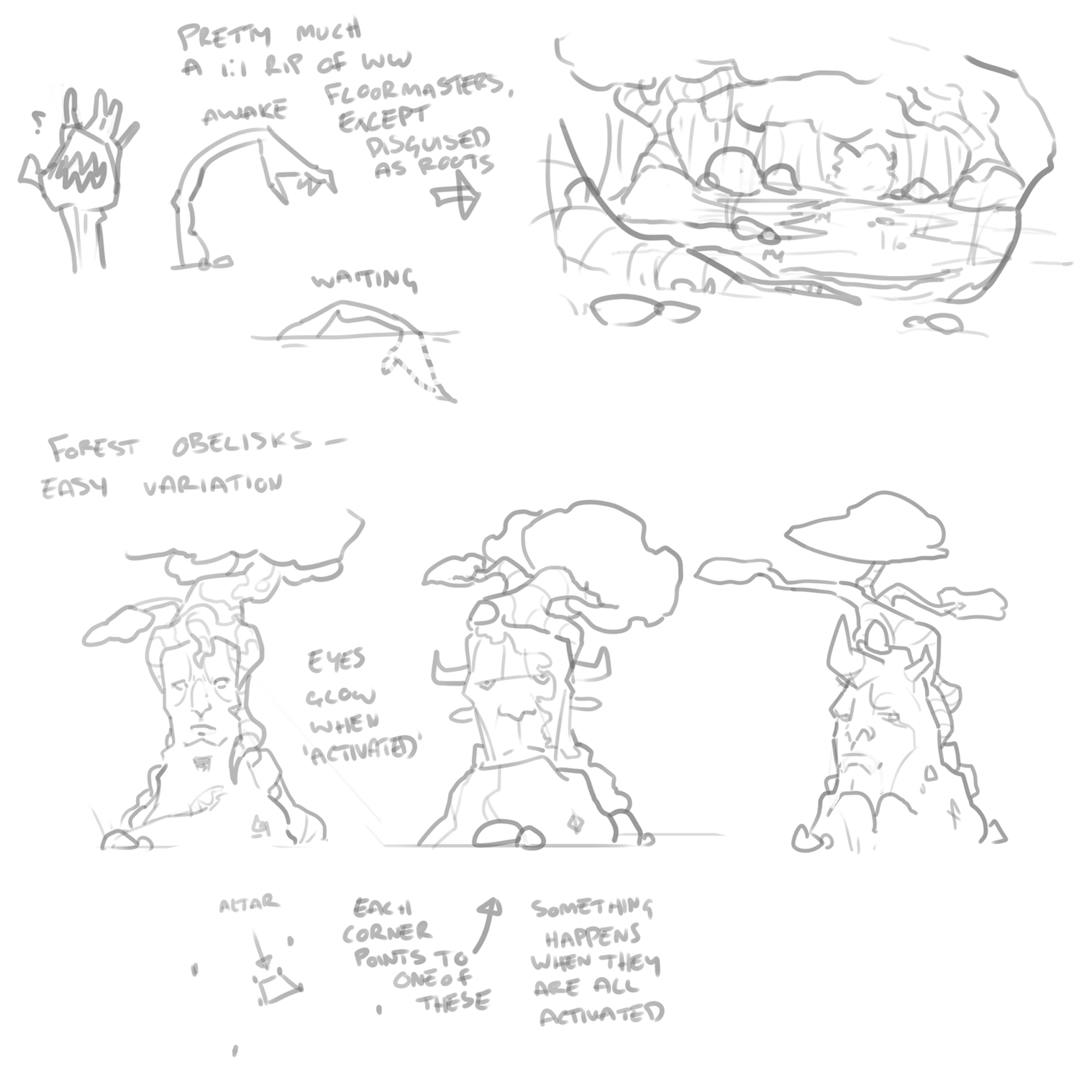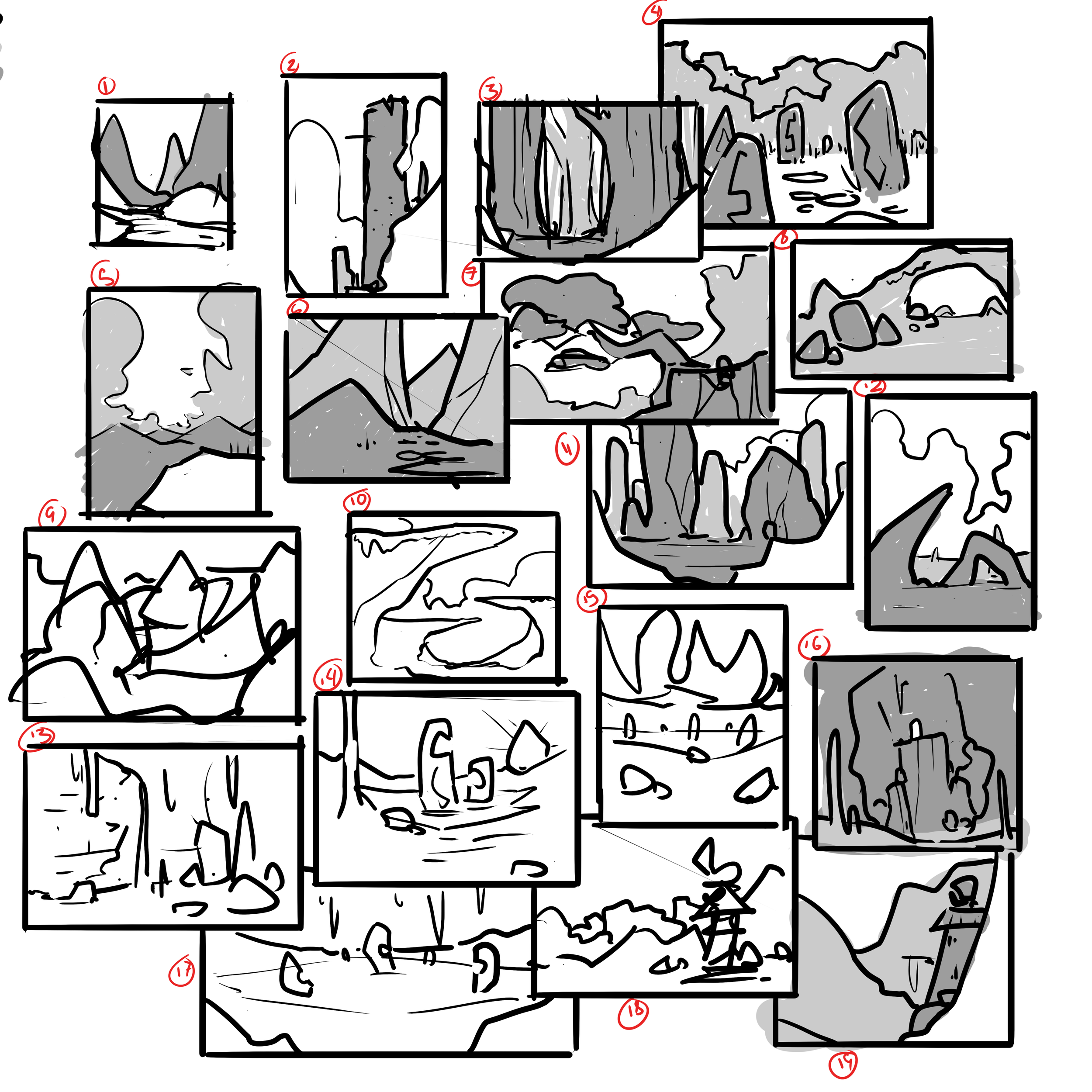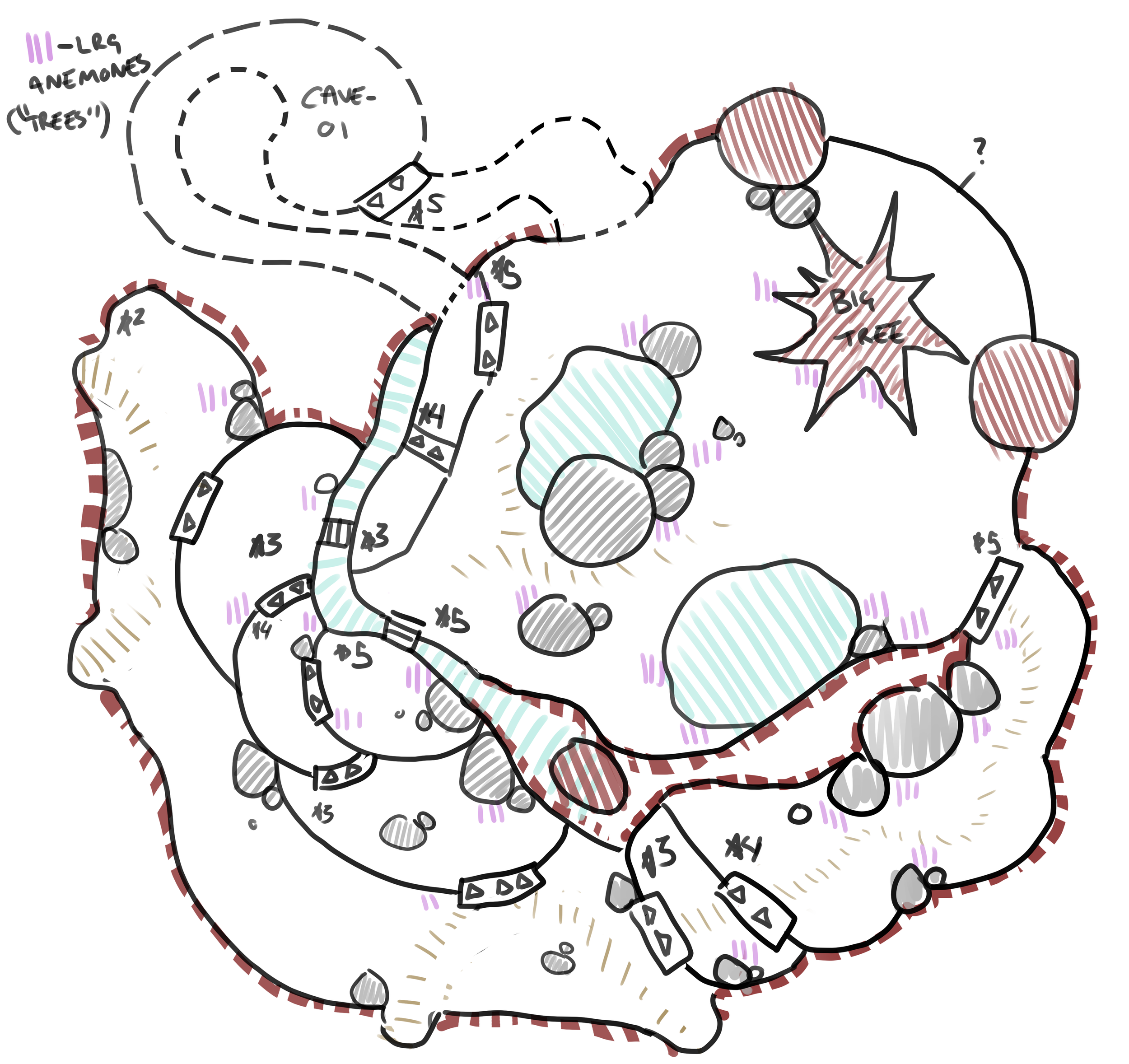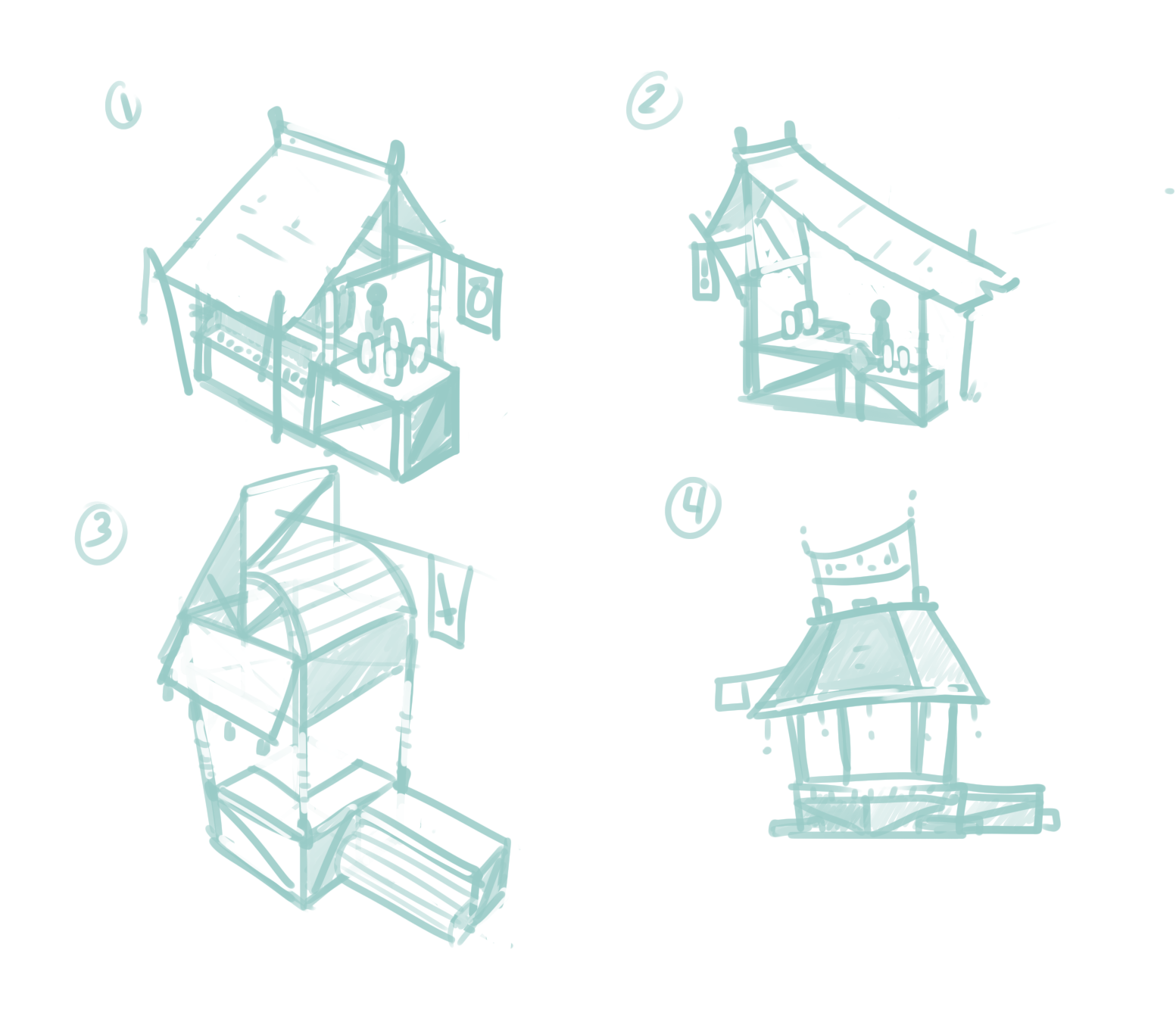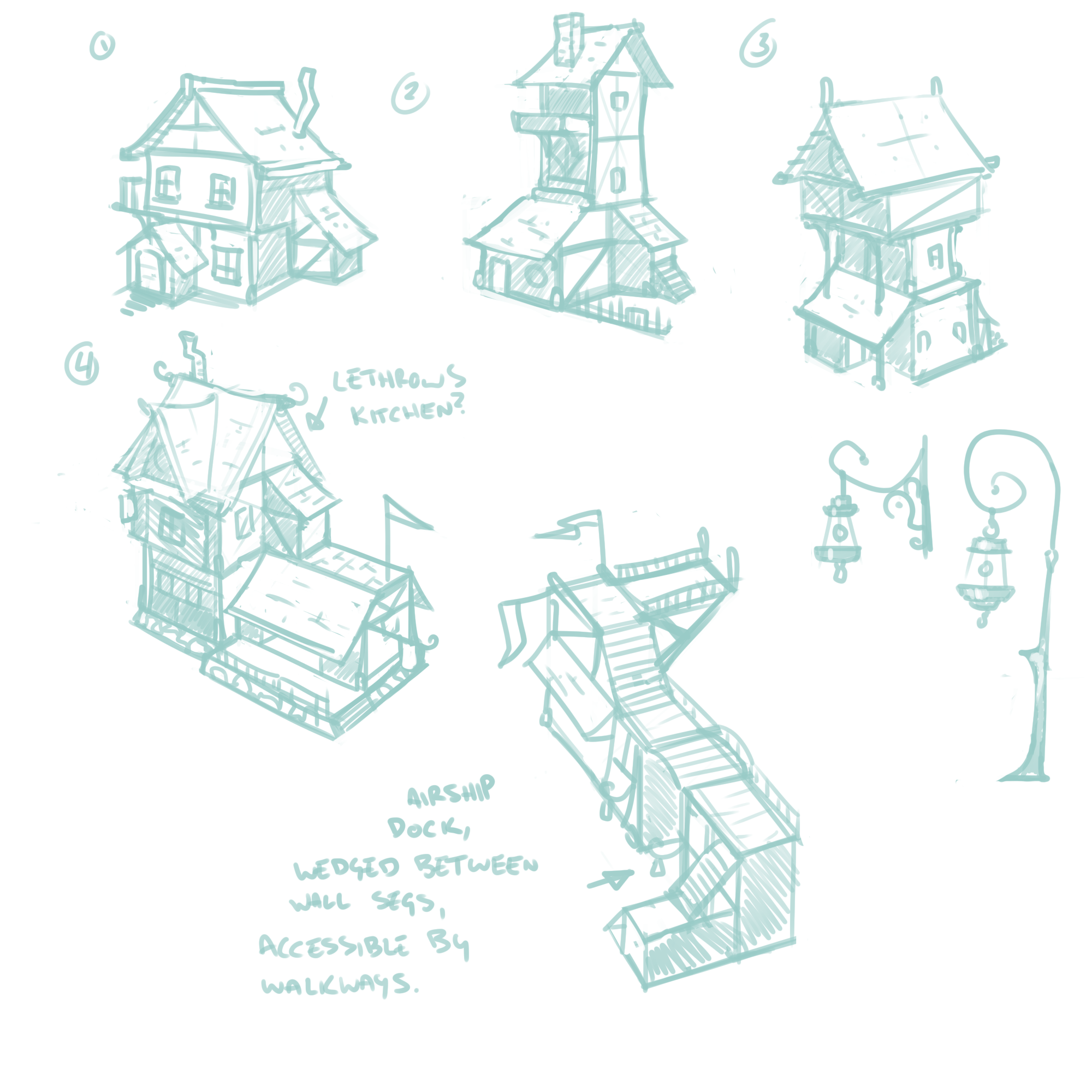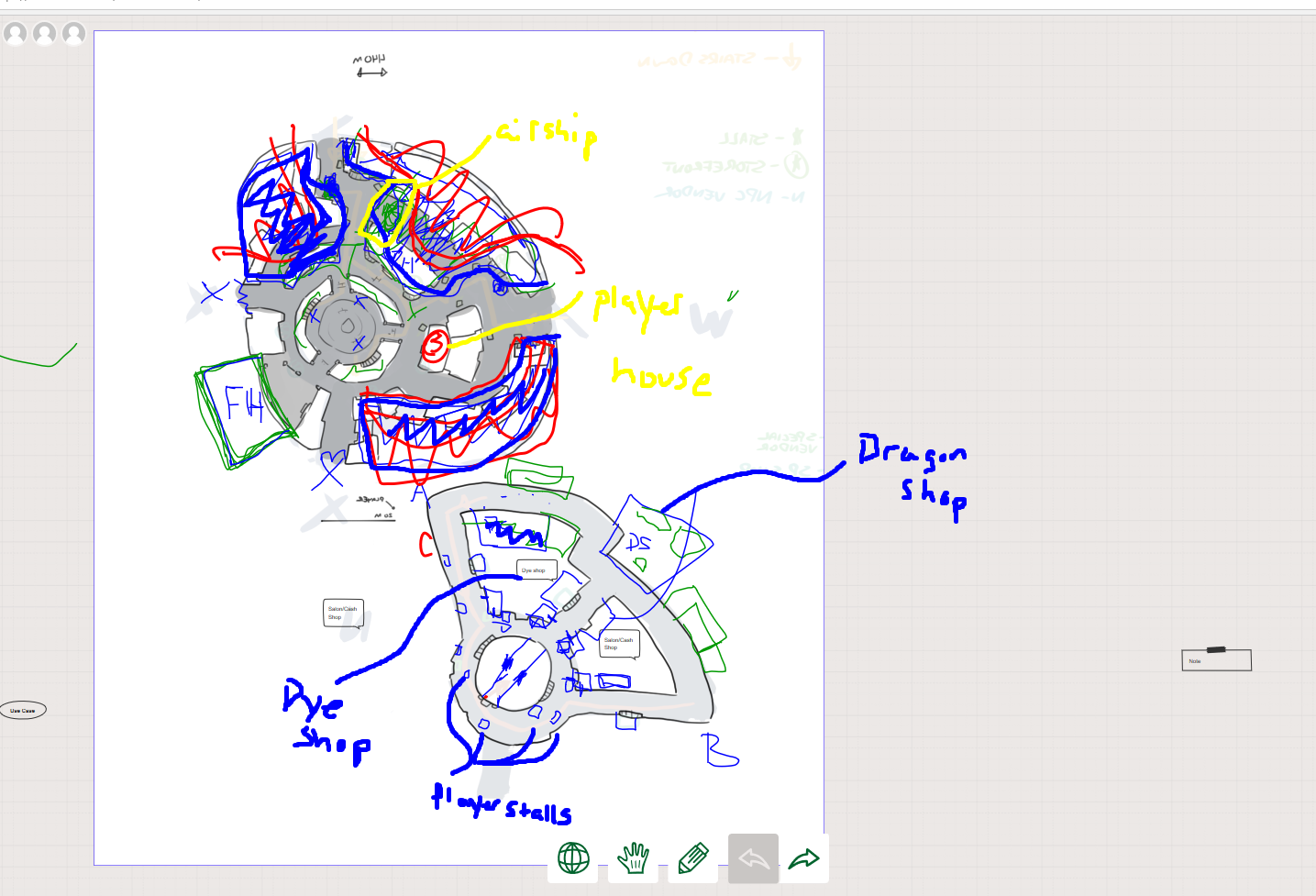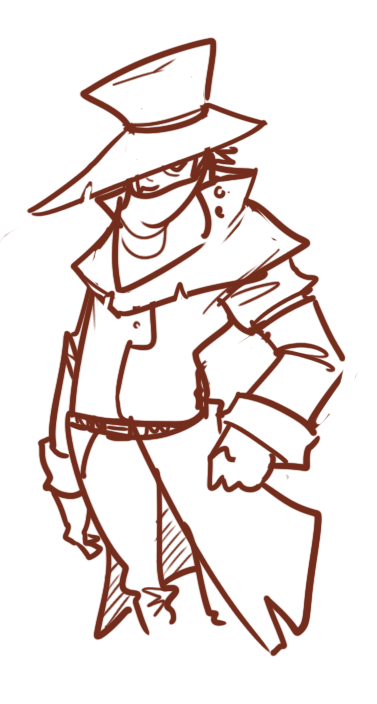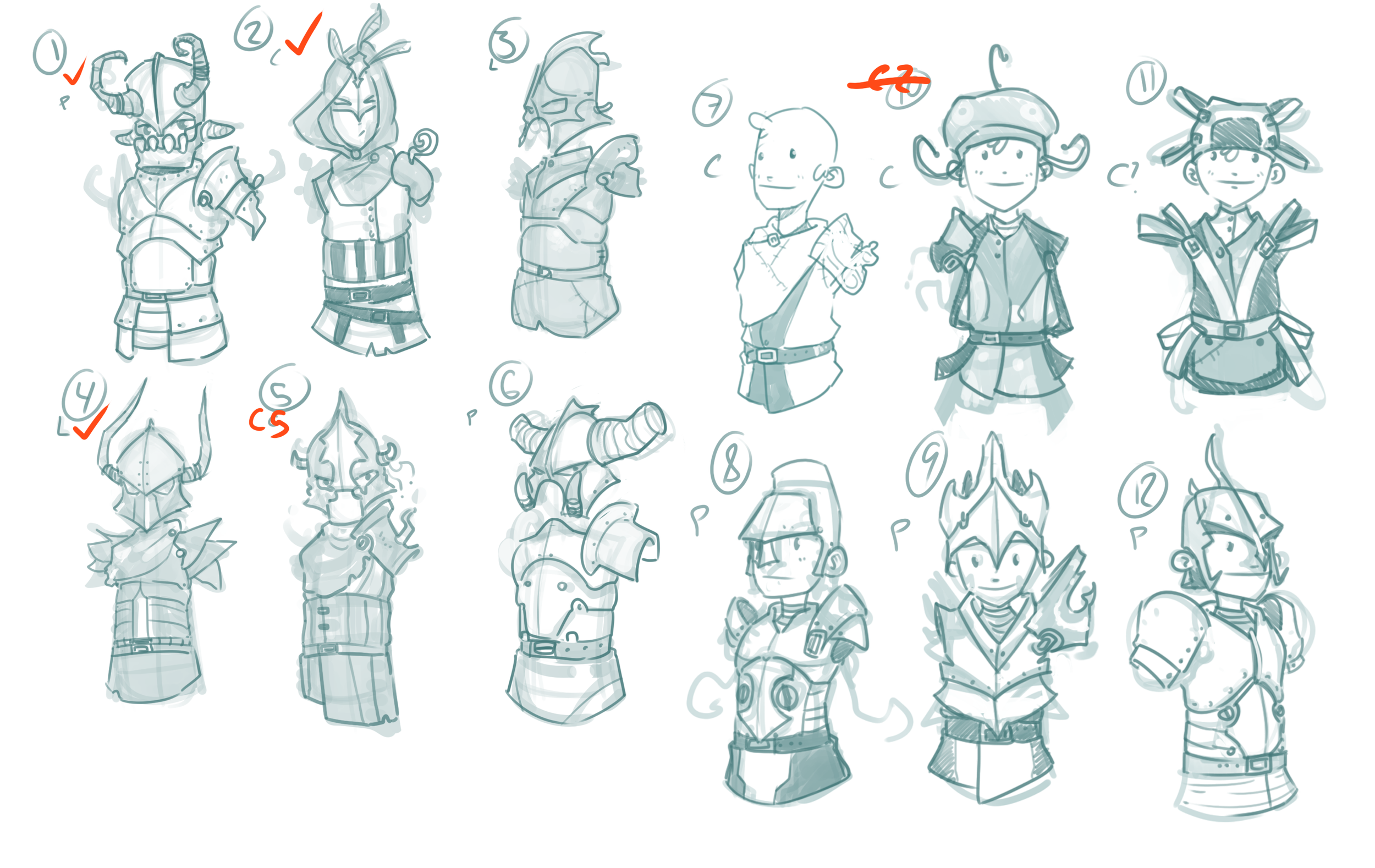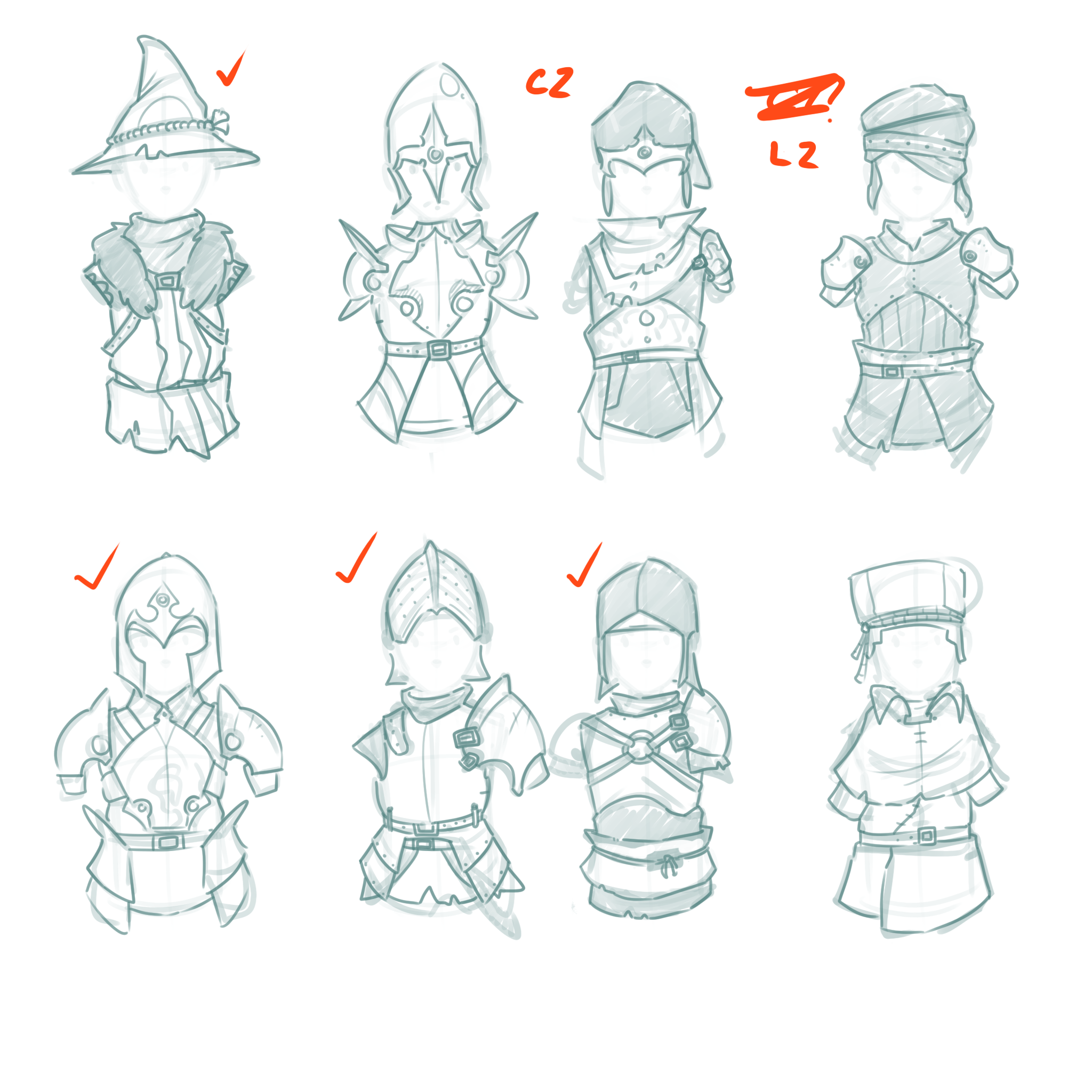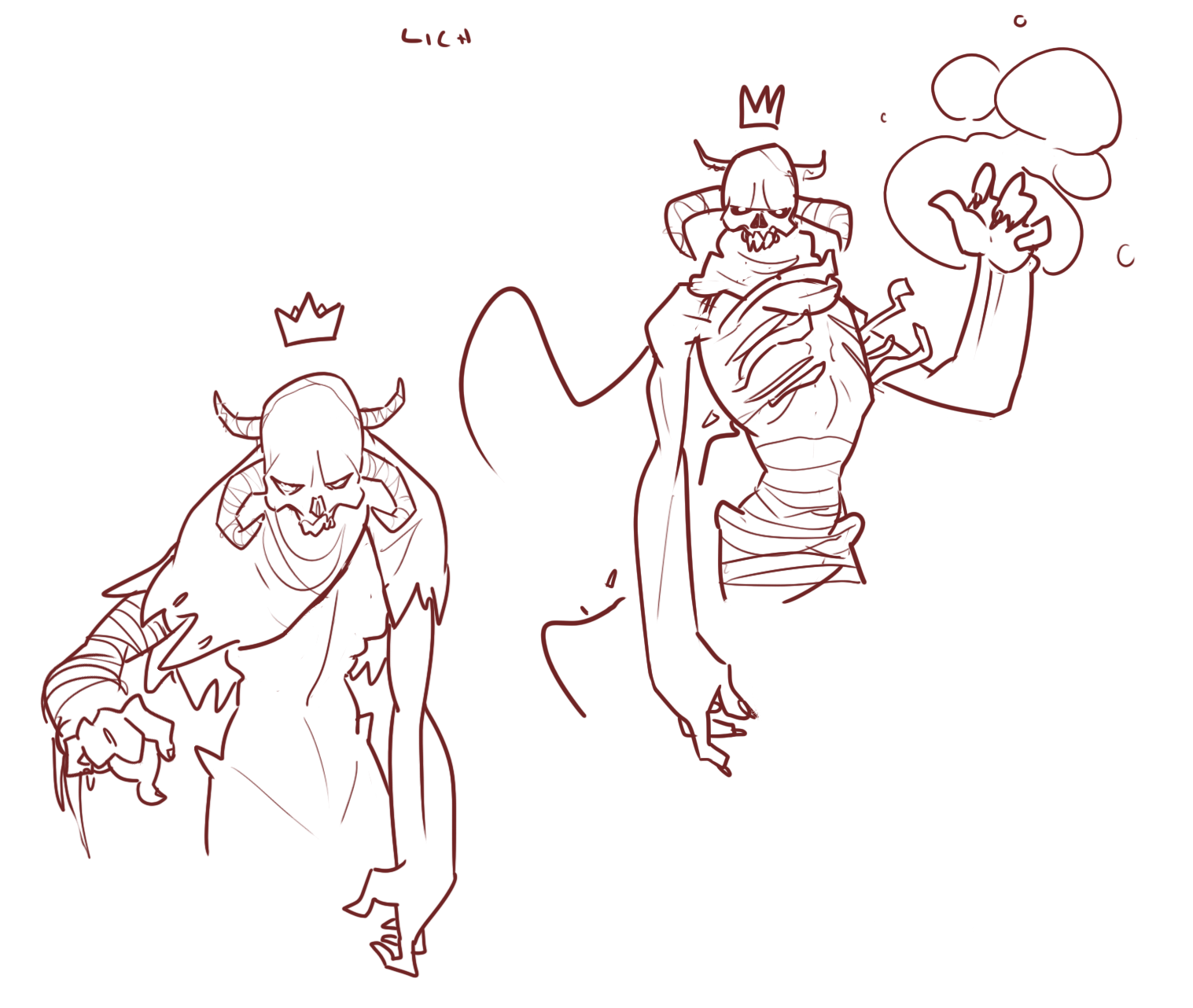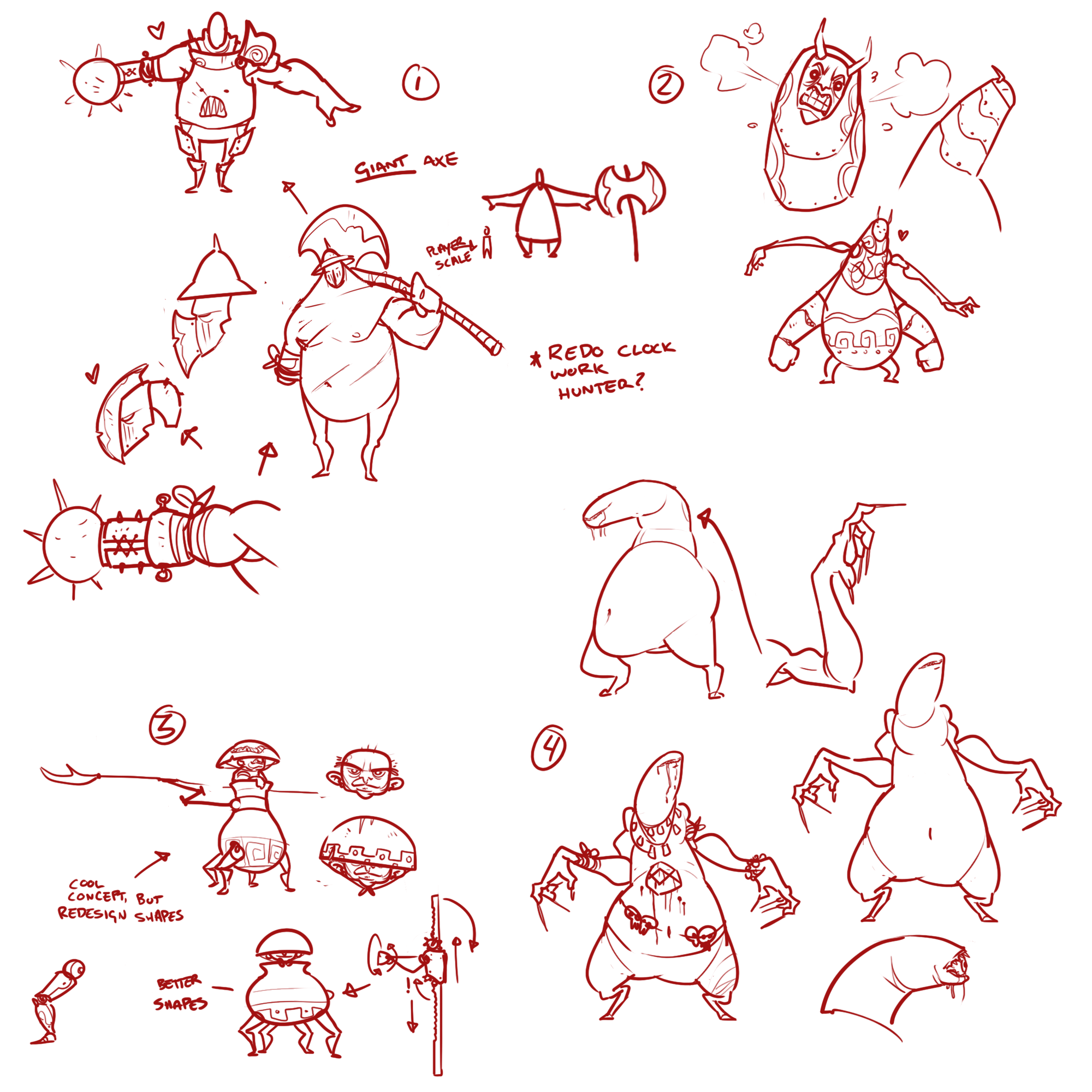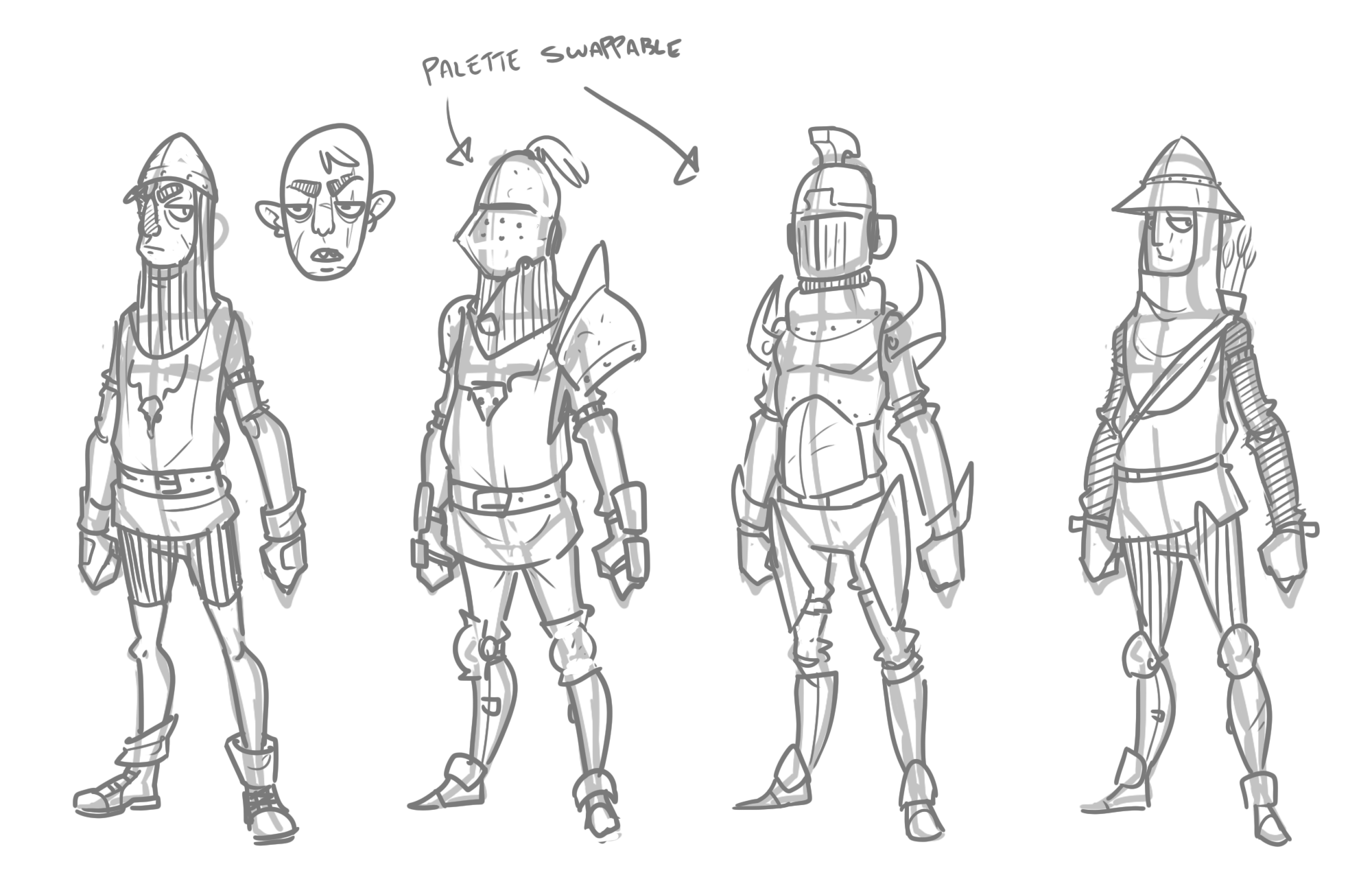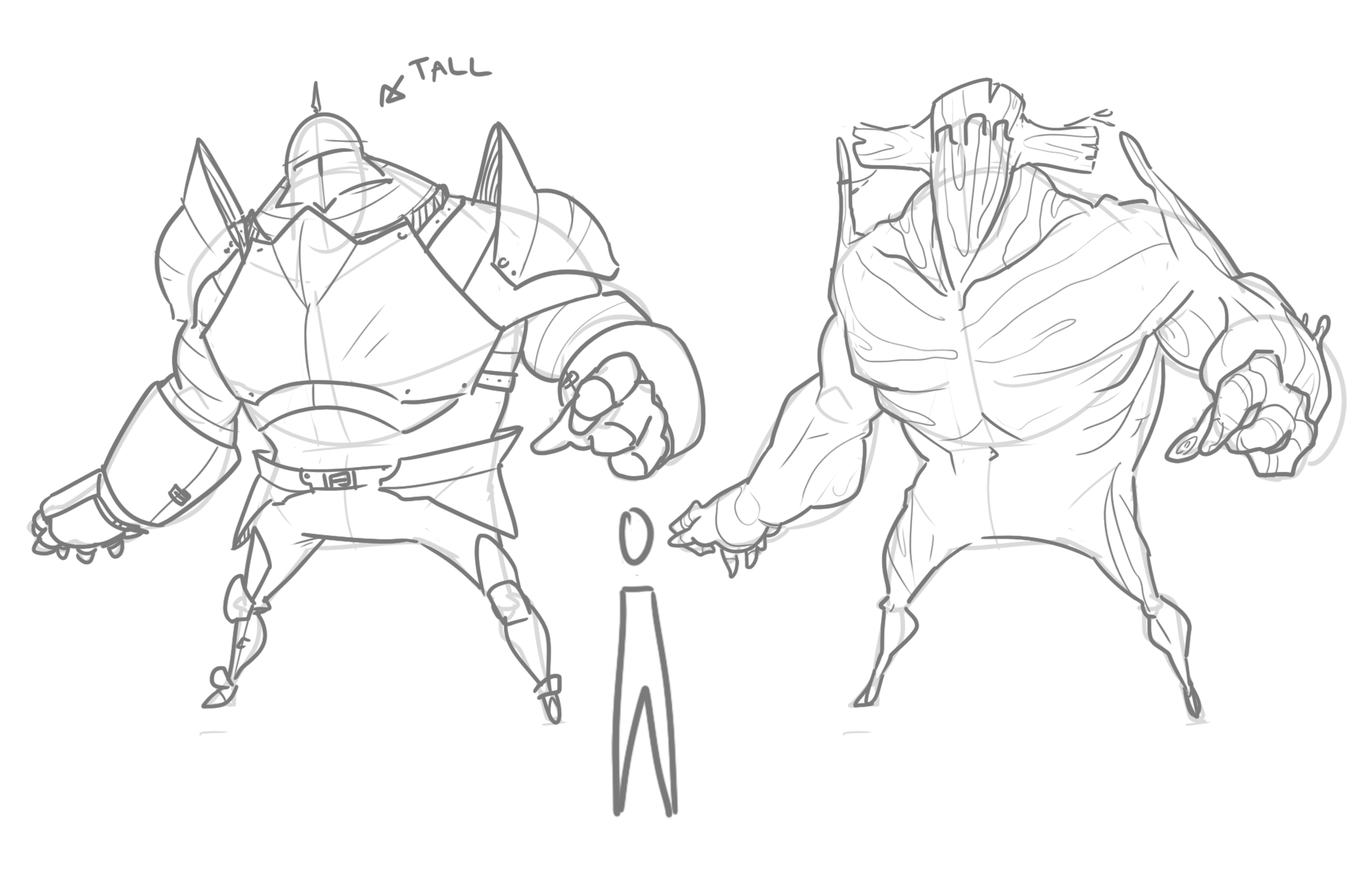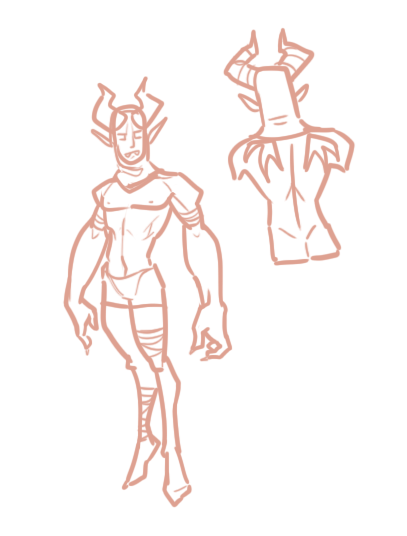Reborn and Mobile VR
We’d launched Orbus 1.0 to reasonably good sales and reception. A pretty common complaint was about the visuals, but at this point I was just amazed we’d gotten a full-fledged VRMMORPG out the door in just over a year with a microscopic team and budget. I was kind of just cruising on content updates at this point, and then I got the news that we’d gotten a dev kit for the upcoming Oculus Quest. There was zero chance of us getting vanilla Orbus to run on the Quest 1, so Riley and Robert came up with the idea of a ground-up reimagining of the original game, specced around the new hardware and treating it as a soft lore reset. I was totally onboard with this idea, and I’d garnered a lot of trust as a problem-solver thanks to my visual overhaul right before the first launch. I was given full-reign over the visual identity of the reimagining and we hired two really great 3D artists, Thomas and Nate, who both had a lot of great skills that I was really excited to leverage into a better-looking product than 1.0. The rework was also a chance to take a second pass a lot of the elements in the base game that I felt were really lacking, such as the NPC and player character models, who I think were all still permanently bald in vanilla Orbus.
Some of the earliest work from Reborn was very blue-sky ideation, very little of which made it into the final game. Nonetheless, It was a really exciting time and I had a lot of fun designing without constraints and dreaming up what this world could possibly be with unlimited time and resources.
The first really big task of the Reborn development cycle was to redesign the main town from the base game into a big, bustling city. We ended up going through a lot of iterations on this one, but due to the hardware ended up settling on something relatively simplistic. A big ref pull we’d get pretty often was the stacks from Ready Player One, which had released somewhat recently, and I tried to weave in as much of Jim Hensons Labyrinth as I could get away with.
One of the things I was most excited to take on was redesigning the NPCs. A lot of them had gotten really substantial lore additions since I’d initially designed them, and I felt like I’d grown a lot as a character designer and was very excited to give them some love and put new and interesting spins on them.
Of course no dev sprint is complete without a pretty hefty chunk of gear and enemy design. By this point I’d started to move away from doing sketches and turnarounds before hand and instead diving straight into the modelling, since a lot of it was adapting designs from preborn to conform to Reborns new asset pipeline. We did get a few cool design pages from that time though. We’d also started working on the mount system which needed to have loads of designs made for it, as mounts in a VRMMO were kind of uncharted territory and no one on the team was really sure exactly how they’d work.
When Reborn had finally launched and been out for a bit, I’d been working really hard for more than three years straight. Reborn had been a big success for us, so I decided it was a pretty good time for me to hand off my responsibilities to the other artists and take a nice long break from fantasy settings and the non-stop asset grind that comes with working on MMORPGs. I stayed on in a consulting role and did some pick-up tasks every once in a while, but by 2020 I had left the project and was working at a medical education startup called Lighthaus inc, which would be my home for a number of years after that.
The wildest thing about looking back on these drawings is just how much my time with Orbus influenced my arstistic DNA. My artistic ideal before joining the project was a lot more rooted in realism and painterly styles, but after three-plus years of trying to craft the fastest, most efficient art style I could come up with, I landed on the exaggerated, sticker-like style that still defines a lot of my stuff. I think a lot of the design work we did unfortunately got lost in translation, just due to time and budget constraints and how comically limited the Quest 1 hardware was. But I can still look back on these sketches and see a lot of value, as well as their reverberations in the final product. I definitely owe a lot of my current identity as an artist and a game developer to the time I spent working on Orbus, and am super grateful that they paid my rent while I was finding my creative voice.




